April 9, 2025
Over-the-counter (OTC) drugs play a vital role in public health by providing consumers with access to safe and effective treatments for common conditions without requiring a prescription. To ensure these products meet established standards, the US Food and Drug Administration (FDA) regulates their development, manufacturing, labeling, and distribution through two primary pathways: the OTC Drug Monograph System or the New Drug Application (NDA) Process.
For developers of new OTC drug products or those looking to bring their products to the United States, understanding the intricacies of regulatory requirements is essential for successful market entry. From classification and approval pathways to labeling, manufacturing standards, and post-marketing surveillance, a clear grasp of these regulations ensures compliance and helps streamline the process of bringing safe and effective products to consumers.
Distinguishing OTC Drugs from Prescription Medications:
In the United States, the FDA categorizes a drug-containing product as either prescription (Rx) or over-the-counter (OTC) based on safety considerations, potential for misuse or abuse, and the necessity for healthcare provider oversight. Prescription drugs require a doctor’s oversight and FDA approval through the New Drug Application (NDA) process. OTC drugs are deemed safe for self-use and follow OTC drug monographs that set standards for ingredients, dosages, and labeling.[1]
| Category | Prescription Drug | OTC Drug |
|---|---|---|
| Requirement | Requires healthcare provider authorization | Available without a prescription |
| Availability | Dispensed at pharmacies | Available off the shelf in retail settings. (supermarkets, pharmacies, convenience stores) |
| Intended Use | Tailored to individual patient needs as prescribed by a doctor | For general use as per labeled instructions |
| FDA Regulation | Reviewed through the New Drug Application (NDA) process | Regulated through OTC Drug Monographs/ New Drug Application (NDA) |
Many everyday healthcare products fall under the OTC drug category, including pain relievers, cold medications, and sunscreens. For example, sunscreens are a widely used OTC drug regulated by the FDA to ensure they are safe and effective in protecting against UV radiation and play a crucial role in preventing sunburn and reducing skin cancer risks. Like all OTC drugs, sunscreens must follow FDA-approved labeling and formulation guidelines to ensure proper use and effectiveness.
Regulatory Approval Process of OTC Drugs:
OTC medications are subject to regulatory oversight to ensure their safety, efficacy, and appropriate labeling for consumer use. The FDA monitors this process through two primary pathways: the New Drug Application (NDA) process and the OTC Drug Monograph system. The OTC Monograph system allows manufacturers to market drug products without undergoing full FDA premarket review, provided the products comply with established, pre-approved guidelines for active ingredients, dosages, formulations, and labeling. In contrast, the NDA process is required for OTC products that fall outside the scope of existing monographs and involves a comprehensive review of clinical data to assess safety, effectiveness, and labeling prior to approval.
1. OTC Drug Monograph Process
- This is a predefined standard for specific drug classes, acting as a “recipe book” outlining acceptable ingredients, dosages, formulations, and labeling.
- If a drug meets monograph requirements, the manufacturer can market it without FDA pre-approval.
- The Division of Non-Prescription Drug Products (DNDP) evaluates safety and efficacy based on scientific data.
2. New Drug Application (NDA) Process
- Required if a drug does not meet monograph standards.
- Involves a detailed FDA review of clinical data, safety, efficacy, labeling, and post-marketing safety.
- NDAs can be filed for new OTC drugs (new medications), Rx-to-OTC switches (prescription drugs transitioning to OTC status), or generic OTC drugs (non-branded versions of approved OTC drugs) [2]
Key Regulatory Requirements:
Labeling
The safe and effective use of over-the-counter (OTC) drugs is highly dependent on proper labeling. The FDA mandates that OTC medications display a standardized Drug Facts label that gives accurate and consistent product information, ensuring customers are properly informed of what the medication does, how to take it, and any safety measures to take before use.
All OTC drugs must include a Drug Facts label with key details such as active and inactive ingredients, purpose, uses, warnings, directions for use, and dosage instructions. Additional required information includes expiration dates, lot numbers for tracking, manufacturer details, and tamper-evident packaging statements to enhance safety. If a manufacturer makes any changes to the product formulation or safety information, all changes must be adequately and promptly provided to consumers through updated labeling of any affected product batches.[3]
cGMP
OTC drug products must comply with Current Good Manufacturing Practices (cGMP), as enforced by the U.S. FDA, to ensure product quality, safety, and consistency. These regulations, outlined in 21 CFR Parts 210 and 211, require manufacturers to use validated testing methods, controlled production processes, and ensure proper facility conditions to meet standards for identity, strength, quality, and purity.
The cGMP framework all aspects of pharmaceutical manufacturing, including quality control, raw material testing, process validation, laboratory analysis, packaging, and labeling. Compliance necessitates manufacturers’ use of modern equipment, high-quality materials, and strict operating procedures to prevent contamination, mislabeling, and batch variability. The FDA conducts routine inspections to verify compliance, with non-compliance possibly leading to enforcement actions such as warnings, recalls, shutdowns, or legal action. By following cGMP regulations, OTC drug manufacturers not only ensure product safety and regulatory compliance but also supports consumer confidence and the safe distribution of OTC products.[4]
Post-Marketing Surveillance:
Post-marketing surveillance is a crucial process for ensuring the continued safety and effectiveness of over-the-counter (OTC) drugs after they reach the market. Since OTC drugs are widely accessible without a prescription, monitoring adverse events and recalls plays a key role in protecting public health. The FDA requires manufacturers to report serious adverse events and oversees product recalls to address safety concerns that may arise after distribution.
Adverse Event Reporting
Manufacturers, packers, and distributors of OTC drugs must report any serious adverse events, such as hospitalization, life-threatening reactions, disability, or birth defects, to the FDA within 15 business days of becoming aware of the incident. Each report must contain specific information, including patient information, an identifiable reporter, details of the drug product involved, and a description of the adverse event. These reports enable regulators to assess potential risks and take appropriate actions, such as issuing safety communications or requiring product labeling updates. Companies are also required to maintain records of adverse events for a minimum of six years, ensuring traceability and regulatory accountability.
OTC Drug Recalls and Public Safety
Drug recalls are the most effective way to remove a defective or potentially harmful product from the market. Recalls may be initiated voluntarily by the manufacturer or requested by the FDA when a product is determined to pose a risk to public health. The FDA oversees the effectiveness of recall activities, ensuring companies properly notify distributors, retailers, and customers and that affected products are promptly withdrawn from distribution. Public notifications are typically issued for recalls involving widely distributed or high-risk OTC drugs. If a product is recalled, consumers are often advised to return it to the store for a refund or consult a healthcare provider for further guidance. The FDA classifies recalls into one of three classes, Class I, II, or III, depending on the level of risk posed, and includes those actions in its weekly enforcement report to keep the public informed.
Post-marketing surveillance activities, including adverse event reporting and recalls, help maintain consumer trust and product safety in the OTC drug market. By continuously monitoring and addressing safety concerns, manufacturers and regulators work together to minimize risks and ensure public health protection.[5]
Conclusion:
The regulation of OTC drugs in the United States is a comprehensive process designed to ensure product safety, efficacy, and proper labeling for consumer use. The FDA’s oversight, from approval pathways and manufacturing standards to post-marketing surveillance, helps maintain product quality and public trust. By following cGMP regulations, accurate labeling, and adverse event reporting, manufacturers can ensure compliance and consumer safety while providing accessible treatments for common health conditions.
1. Center for Drug Evaluation and Research. (n.d.-b). Prescription drugs and over-the-counter (OTC) drugs: Q & A. U.S. Food and Drug Administration. https://www.fda.gov/drugs/frequently-asked-questions-popular-topics/prescription-drugs-and-over-counter-otc-drugs-questions-and-answers
2. Raps 2025. Global Regulatory Solutions and Services Company. (n.d.). https://www.freyrsolutions.com/blog/otc-drug-development-and-regulations-decode-the-regulatory-pathways-in-the-usa.
3. Center for Drug Evaluation and Research. (n.d.-b). The over-the-counter drug facts label. U.S. Food and Drug Administration. https://www.fda.gov/drugs/understanding-over-counter-medicines/over-counter-drug-facts-label
4. Understanding current good manufacturing practices (cgmp). Understanding Current Good Manufacturing Practices (cGMP). (n.d.). https://ecomundo.eu/en/blog/understanding-current-good-manufacturing-practices-cgmp
5. Center for Drug Evaluation and Research. (n.d.). Postmarketing adverse event reporting for nonprescription human drug.. U.S. Food and Drug Administration. https://www.fda.gov/regulatory-information/search-fda-guidance-documents/postmarketing-adverse-event-reporting-nonprescription-human-drug-products-marketed-without-approved

Anand Bhati
Anand Bhati is a Regulatory Affairs Writer with experience in regulatory submissions, risk management, and global compliance for medical devices. He holds a Master’s in Regulatory Affairs from Northeastern University. His experience includes supporting 510(k) submissions, risk assessments, and regulatory strategy development for medical devices. He has contributed to post-market surveillance initiatives, clinical compliance tools, and vigilance reporting, ensuring adherence to FDA and international regulations. With a strong focus on cGMP compliance and quality systems, Anand is committed to regulatory excellence and facilitating market access for healthcare innovations.


